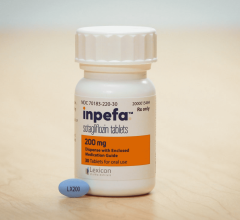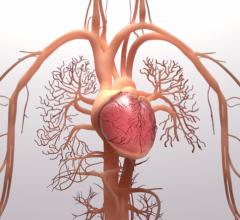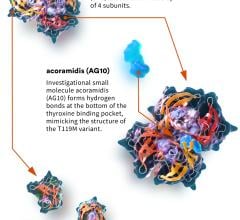July 2, 2014 — LipoScience Inc. announced the publication of the first large-scale real world study evidencing a link between low LDL-P and reduced cardiovascular disease (CVD) risk. Data in the study published in Atherosclerosis demonstrated that high-risk patients who achieved a low LDL-P level experienced a 22-25 percent reduction in CVD risk compared to high-risk patients that achieved a low LDL-C level.
"Data from multiple epidemiological studies have suggested that LDL particle measurements are a better predictor of cardiovascular events than LDL cholesterol concentrations, particularly in patients whose LDL-P and LDL-C levels are dissimilar," noted study co-author Michael Grabner, Ph.D., of HealthCore Inc. in Wilmington, Del. "We now have real-world evidence from a large-scale study of commercially insured patients to support the use of LDL-P measurement as an LDL management tool, based on the more favorable clinical outcomes we observed in patients achieving target LDL-P levels, compared to LDL-C targets."
The study was sponsored by LipoScience and jointly designed by LipoScience and HealthCore, with clinical input from Peter P. Toth, M.D., Ph.D., director of preventive cardiology at CGH Medical Center in Sterling, Ill., and Terry A. Jacobson, M.D., professor of medicine at Emory University, Atlanta. Results were previously presented in poster sessions at the Scientific Sessions of the American Heart Association in November 2013 and the 2014 American College of Cardiology Scientific Sessions.
Grabner and colleagues conducted a claims analysis among high-risk patients identified from the HealthCore Integrated Research Database (HIRD), which contains eligibility, medical and pharmacy claims for approximately 36 million members of Blue Cross and Blue Shield health plans across the United States. High risk was determined based on the presence of established coronary heart disease (CHD), stroke, transient ischemic attack or diabetes mellitus. Among the 15,569 patients with LDL-P measurements in the study, the risk of a CHD event increased by approximately 4 percent for each 100 nmol/L increase in LDL-P level.
To improve comparability, patients treated to low LDL-P levels (<1,000 nmol/L) were then matched to patients treated to low LDL-C levels (<100 mg/dL) with similar demographic and clinical characteristics. Among these matched cohorts, which included more than 4,000 high-risk patients, the investigators found that those who achieved target LDL-P levels received more aggressive lipid-lowering treatment than those reaching target LDL-C concentrations. Those treatment differences were associated with better outcomes (as measured by the reduction in CV event rates) over one to three years of follow-up.
"The HealthCore study is the first to demonstrate a real-world association between LDL particle levels and cardiovascular risk, while also demonstrating an association between attainment of a target LDL-P level and more aggressive lipid-lowering therapy," stated William C. Cromwell, M.D., chief medical officer of LipoScience. "The results suggest that using LDL cholesterol levels to guide treatment decisions may mask the need to consider changes in lipid-lowering therapy to help patients achieve appropriate reductions in LDL-P. The results also lend support to treatment guidelines recommending the use of LDL-P as a therapeutic target, as advocated by the American Association for Clinical Chemistry and the American Association of Clinical Endocrinologists."
For more information: www.liposcience.com, go towww.healthcore.com.


 July 10, 2024
July 10, 2024 








